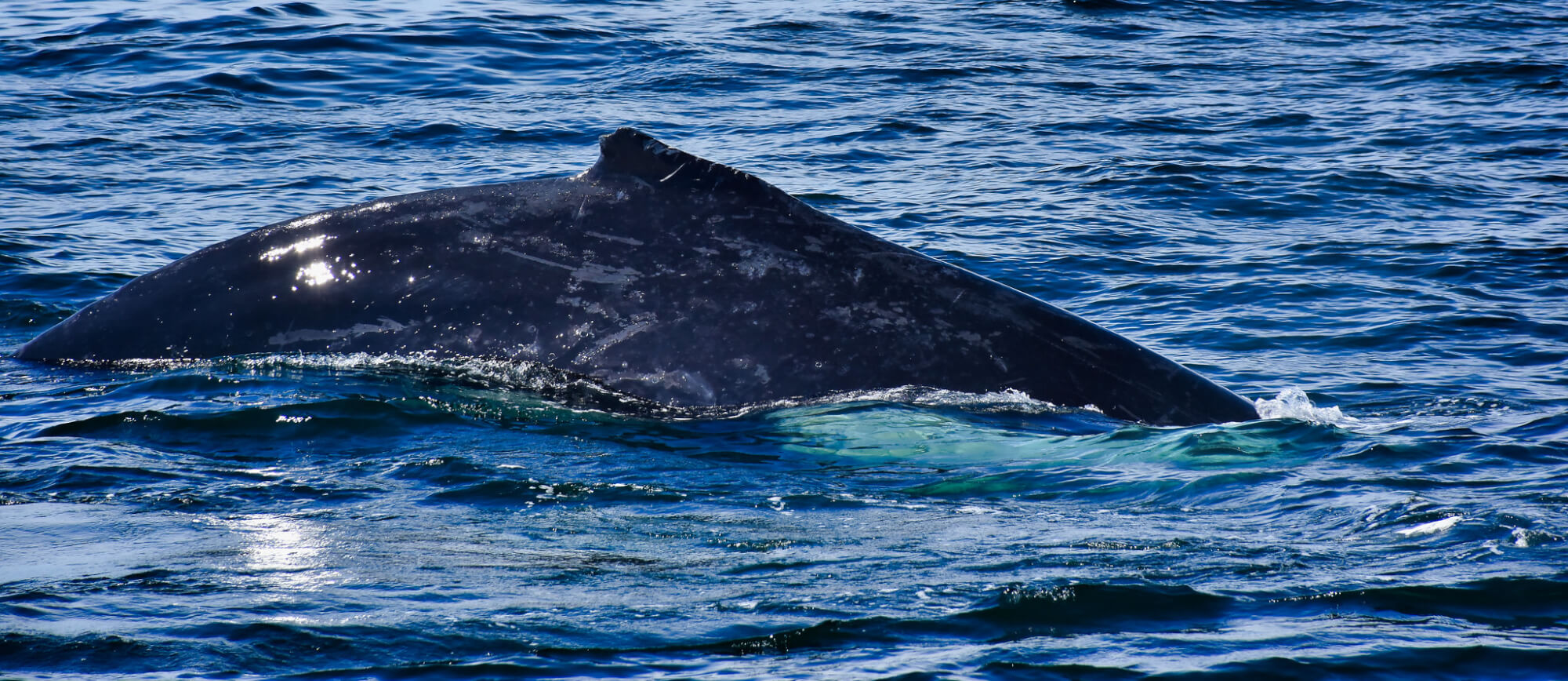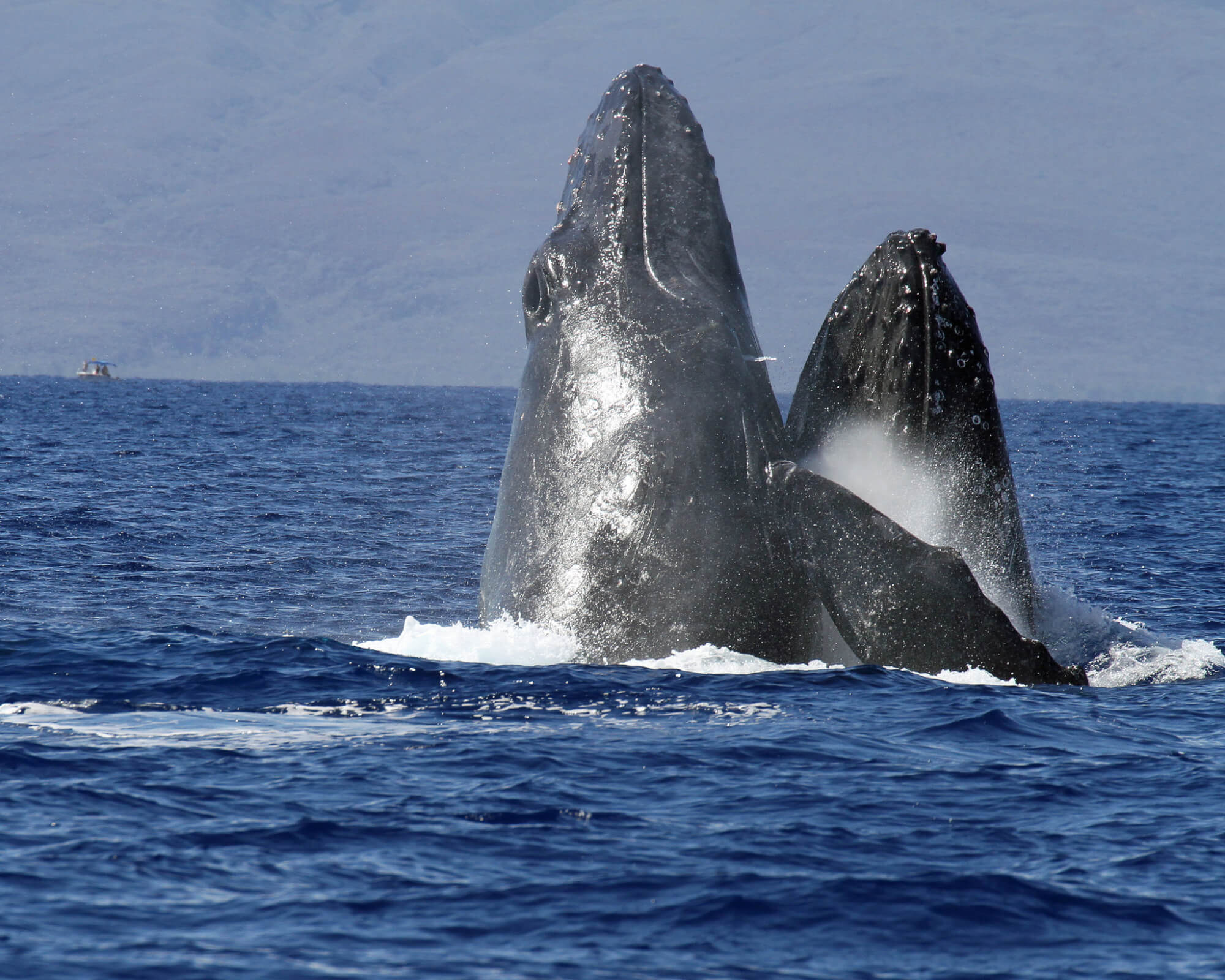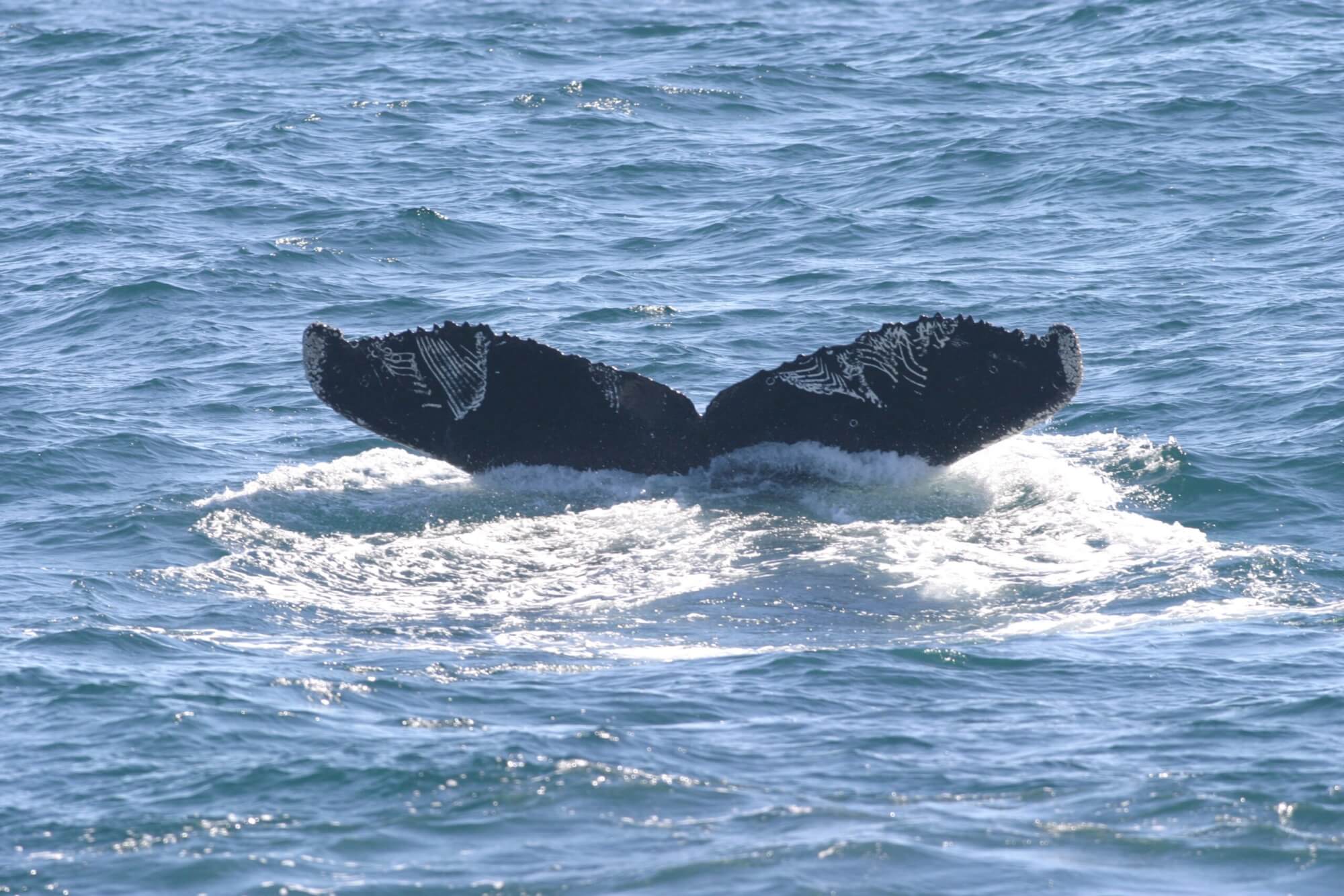Some whales bear reminders of their past. Sometimes inconspicuous, sometimes more pronounced, scars of all shapes and sizes mark the skin of these marine mammals. Any number of events can lead to these markings, and at any stage of the animals’ lives. Causes may be associated with human activities or with intra – or inter-specific interactions, i.e. between individuals of the same species or of different species.
Whales’ smooth-looking skin is in direct contact with the water and the air. It covers a thick layer of blubber that allows them to retain heat and stay warm. The absence of fur means that injuries are easy to see!
Entanglements...
Fishing gear (article in French) includes nets, ropes, traps, lines and dredges on which non-target species can sometimes get caught or ensnared. Whales can become entangled in such equipment, which sometimes leaves them scarred for life.
The ropes can get wrapped around the pectoral fins, in the mouth as well as around the head, body and peduncle (base of the caudal fin). Rope stretched across the whale’s skin can lead to wounds such as lacerations, notches and cuts. Such injuries can even result in the complete or partial truncation of the caudal and pectoral fins, or a discolouring of the skin. The tighter the rope and the heavier the gear, the deeper the wound will be. Entangled whales can also lose teeth or baleen if the fishing gear gets wrapped in or around their mouth.
... and lacerations
Injuries may also be caused by sharp objects, especially the parts of a boat such as the propeller, skeg or rudder. A cetacean that comes into contact with these elements may suffer incisions, lacerations, hash marks, etc. This type of injury is characterized by parallel, equidistant incisions that may be straight or S-shaped. The presence of a single linear or curved cut is also an indication of this type of accident.
Ship strikes
Blunt trauma can be caused by a whale rubbing or bumping against a hard surface such as the hull of a boat, a dock or an anchor, or even a beach. A collision, when it does not end fatally, can lead to permanent scarring. The severity and type of marks will depend on the size and thickness of the surface in question, the angle of impact as well as the part of the whale’s body affected. The range of injuries that may result include abrasion, contusion, laceration and skeletal fracture.
Scars may be characterized by a white mark running across the body, accompanied by a depression. The skin at the point of impact may also show a certain depigmentation.
Intra-specific competition: a question of supply and demand
In some species of whales, sparring between bulls in their breeding grounds can lead to scarring. This is due to the limited number of females ready to breed compared to the number of available males. Aggressive behaviour includes collisions, blows to the pectoral and caudal fins, peduncle, head, chin and entire body, and even biting.
Risk of predation
Certain killer whale populations sometimes adopt a specialized diet where they show a preference for marine mammals such as large rorquals or sperm whales. In this context, these predators sometimes attack calves near breeding sites, leaving them scarred for life, that is when the attacks are not lethal. Rake marks left by killer whales can be seen on the caudal fin of some individuals. The marks can also be found elsewhere on the body, but are more difficult to see.
This type of scar is characterized by the presence of three or more marks that are parallel and equidistant. In some cases, the attacks are more severe and part of the caudal fin may be lost altogether.
Waning health
The events that lead to scarring in cetaceans have an effect on their physical and psychological state. The presence of a cut, no matter how small it may be, is an entry point for microbes that can slow down tissue repair.
Scars can make the affected body part less resilient, cause loss of mobility and function, or even atrophy. Females that have survived a collision sometimes die when they become pregnant, as the scarred section of their abdomen ruptures due to pressure and stretching caused by the fetus. Additionally, tissue necrosis can lead to the loss of a limb.
Great remedies for great ills
The origins of scars in different species of whales are varied. Evidently, there is nothing that can be done to control intra- and inter-specific incidents, since this is simply Mother Nature at work! On the other hand, solutions do exist to reduce the occurrence of scars caused by human activities. For example, recently developed ropeless fishing gear can help prevent entanglements. Moreover, in order to support efforts to protect the endangered North Atlantic right whale as well as other cetacean species, “whalesafe” fishing gear will be mandatory beginning in 2023. Reducing boat speeds in regions frequented by cetaceans or simply avoiding these regions altogether also reduces the chances of collisions.
It is also possible to act on a smaller scale while still making a significant contribution to marine mammal protection. GREMM offers tools for citizens who wish to take action, in particular the “Navigating Whale Habitat” training, which allows participants to deepen their understanding of whales and the regulations in force to protect them. Awareness and education about whales and their health are powerful strategies for safeguarding their future!











